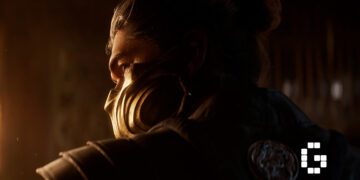Legends of Runeterra is now out in the wild to the general public! We got to try out the limited beta which meant games would be hard to find, so unfortunately, the versus and social aspects will be less touched on, but you can see for yourself how the card game will play. Let’s get into it!
What’s in the box?
The user interface is pretty clean and easy to read. Everything can be done with the mouse: left click and drag to play a card, or to pull it back, right click to view a card closer and its text, you get the idea. The tutorial also progresses slowly enough, especially to the benefit of players unfamiliar to card games.

The various characters in the cards and their leaders can exchange banter, for the extra flavour. The tutorial quests are also all similarly done, with a bit of story to provide additional context to the cards you’re playing. Here’s a handy tip for you: if you hold down the left mouse button and drag it across your cards, it will stack the cards and you can play them all at once.
The board is limited to six cards placed on it at a time, with spells occupying the median line. They don’t mention hand size limit, though, in the tutorials. With essentially three areas in which you can hold cards, perhaps they hadn’t thought it necessary to mention.
The hand is dealt
There’ll be plenty of key words for you to get used to, but don’t worry! For new players, and maybe even for the veterans who just want to warm up, Runeterra provides many tutorial matches you can get right into to find out the variety of systems that you’ll find in the game. The tutorials will appropriately reset if you do not manage the correct action, which makes it more for the total newcomer.

You’ll have your hand at the bottom of your screen, followed by the cards you’ve played, then lastly, the middle board space for placing your cards. You see, Runeterra employs a “attack” and “block” system. With an attack “token”, as indicated to the right of your screen, you’ll be able to place units to strike the enemy Nexus. However, that does not mean your opponent is helpless: they can still deploy spells and units on their side of the board to block your attacks.
You and your opponent will take turns to block and attack. If your units are unable to penetrate the units, then the enemy nexus will not take any damage. Incidentally, a nexus starts with 20 health, which can make games snappy if you can play it right. Naturally, there will be cards, effects etc. that will facilitate quick, or stall games.
You can have two Regions in a deck. Regions can technically be compared to classes, bearing their unique traits and certain archetype of skills. A deck has a maximum size of 40 cards. A maximum of six cards can be placed on the attack/defend board, though I’m not sure how many can be in your hand, or the playing dock.

Champion effects are appropriately bombastic, as befitting their status. Champion cards are unique in that they can “level up”, able to add on a variety of effects depending on which one you have. They also have specific requirements with which to trigger their level up effects, but when you’ve done it, they transform with great fanfare on your screen. You’ll be able to read their level up effects before you play them too, as with any other card that may come with tokens or their key words.
If you prefer not to use constructed/prebuilt decks, you can head over to Expedition and build your deck from a selection of cards. You’ll start off with 3 for 3, until you lock in your Regions, upon which you’ll have to pick from sets of 2 from 3 choices.
For those like myself who like the PvE aspects of card games like Shadowverse’s story campaign, Runeterra is lacking in that aspect. It IS built with multiplayer in mind though, so I wouldn’t begrudge the game for that. Would still be nice!
For victory!

All in all, I’d say Legends of Runeterra does quite nicely to ease the, one presumes, primarily MOBA player into a card game with easy to see effects, clear text and clean presentation. The attack and block mechanics makes even your technically-not turns more strategic as you figure out how to block, then strike back once you can. Often, your opponent’s turn can be the most frustrating ones as you can’t interact with the board, but Runeterra removes that with this system.
Legends of Runeterra is now available on PC and iOS / Android, with cross-platform play available. Give it a shot!










![[EXCLUSIVE] Inside Japan’s Indie Game Revolution – An Interview with BitSummit Organizer Masahiko Murakami](https://cdn.gamerbraves.com/2025/05/BitSummit-Orgainzer_Interview_FI-360x180.jpg)
![[EXCLUSIVE] The Art of Adaptation: Developer Interview Details the OVERLORD Mobile RPG Lord of Nazarick](https://cdn.gamerbraves.com/2025/05/Lord-of-Nazarick_Interview_FI-360x180.jpg)
![[EXCLUSIVE] Taking Gundam in Bold New Directions – Interview with GQuuuuuuX Director Kazuya Tsurumaki](https://cdn.gamerbraves.com/2025/04/Kazuya-Tsurumaki_Interview_FI-1-360x180.jpg)


![[SEA Exclusive] From Shadows to Shipwrecks – Jennifer English Talks About Bringing Emotional Depth to Clair Obscur: Expedition 33](https://cdn.gamerbraves.com/2025/04/Clair-Obscur-Jennifer-English_Interview_FI-360x180.jpg)

![[EXCLUSIVE] Do the Game Interview – An Intimate Look at the Challenges of Game Development](https://cdn.gamerbraves.com/2025/04/Do-the-Game_Interview_FI-1-360x180.jpg)
![[EXCLUSIVE] Interview with the Minds Behind of Den of Wolves – 10 Chambers’ New Sci-Fi Heist FPS](https://cdn.gamerbraves.com/2025/04/Den-of-Wolves_Interview_FI-360x180.jpg)










![[GUIDE] SD Gundam G Generation Eternal Unit Tier List](https://cdn.gamerbraves.com/2025/04/SD-Gundam-G-Generation-Eternal-Tier-List_Review_FI-360x180.jpg)

